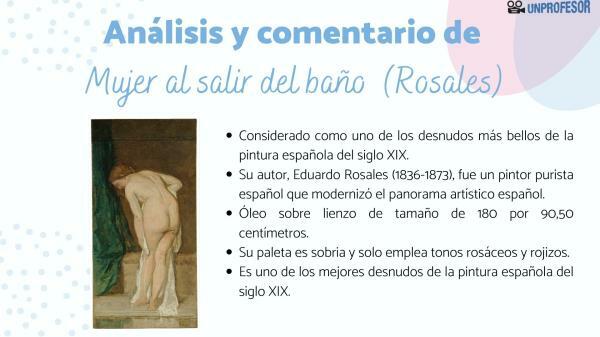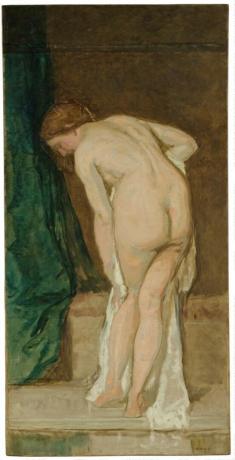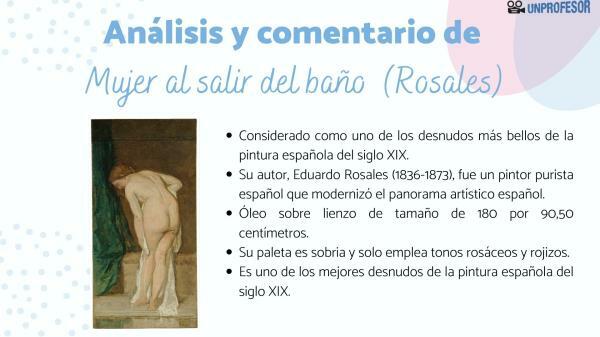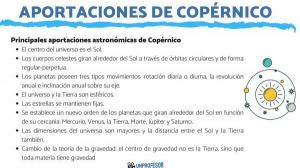Woman leaving the bathroom by Eduardo Rosales: commentary and analysis

Woman leaving the bathroomIt is considered one of the most beautiful nudes in 19th century Spanish painting. the author of it, edward rosales (1836-1873), was a Spanish purist painter who modernized the Spanish art scene of his time and that, at present, constitutes one of the figures that he has to recover.
Rosales managed to achieve a certain fame in his time, without being able to achieve the prominence that he deserved when he died at an early age. In this work, Rosales gives a good example of his artistic talent and his ability to renew the Spanish painting of his time with the passage of time. academic purism to realism of the great masters like Velázquez.
In this lesson of unPROFESOR.com we offer you the comment from Woman leaving the bathroom, one of the most emblematic works of Eduardo Rosales.
Analysis of Woman when leaving the bathroom.
Woman leaving the bathroom it's a oil on canvas in size 180 by 90.50 centimeters. The painting is currently in the
Prado Museum, in Room 061B and was painted by Eduardo Rosales around 1869.theme of Woman leaving the bathroom
This painting is a nude, one of the painter's most admired, considered one of the most beautiful nudes of the Spanish 19th century. Critics came to compare it with another of the great nudes of Spanish painting, the mirror venus of Velazquez. Although in the case of Rosales we are faced with a sketch.
And it is that Woman leaving the bathroom It was painted in a single day in the city of Rome, being a portrait of one of his regular models, Nicolina. The posture of the figure bears a great formal resemblance to the sculpture Banista by the German artist Reinhold Begas (1831-1911), also made in Rome in 1861.
Description
The scene shows us interior of a darkened room in which a nude mature woman bends over to dry her body with a white towel or cloth. She is reflected in the bath water seen in close-up. Behind the woman is a heavy green curtain that falls over a trunk.
The woman turns her back to the viewer and we see her face in profile of her and her hair gathered in a ponytail.
Technique
- The work goes beyond a sketch or unfinished note. The painting has this unfinished character by will of the painter. Rosales is already a mature painter and shows all the plasticity of his pictorial language, as well as the mastery of his faculties and the great expressiveness of his brushstrokes.
- His palette is sober and he only uses pinkish and reddish tones, in addition to introducing the green shade of the curtain as a contrast. Some very characteristic greens of Rosales' work.
- The brushwork is fluid and combines areas of abundant impasto with others in which the background of the canvas can be seen. A lightness and fluidity of color and brushstrokes that will not be repeated until the works of Sorolla.
- The composition It is very simple, with all the light falling on the naked body of the model. The body is suggested with just a few lines, revolutionizing with all this approach and execution the painting of his time and marking the path towards modern painting.

Woman's comment when leaving the bathroom.
As we have already pointed out, this work is considered as one of the best nudes of 19th century Spanish painting. One of those who paved the way for Spanish art towards modernity and the avant-garde. As the critics point out, the premature death of the painter.
Eduardo Rosales is considered one of the great painters of the 19th century Spanish painting. His rapid brushwork is related to the practices carried out later with the Impressionists. Thus, Rosales manages to capture the light and add volume to the woman's body with some light brushstrokes and also playing with the light primer of the fabric. A work that also shows us the mastery achieved by Rosales in the academic work of drawing, volumes, composition and color.
The painting relates to the studies carried out for another of his works, the Death of Lucrecia (1867), a work in which Nicolina was also a model. The props are identical, as is the invoice. The modernity of death of Lucretia It was also misunderstood in her time, being vindicated a posteriori and compared to that of painters such as Manet or Degas.

If you want to read more articles similar to Woman leaving the bathroom: comment, we recommend that you enter our category of History.
Bibliography
- AGUILERA, Emiliano M. Eduardo Rosales. His life, his work and his art, Barcelona, Iberia, 1947
- ANGLES, E. Arias. MUSEO DEL PRADO: "Exhibition of the work of Eduardo Rosales, 1836-1873", Madrid, 1973 (Book Review). Spanish Art Archive, 1974, vol. 47, no. 186, p. 174.
- ARENAS, Etelvina Parreno. The image of women in Spanish painting of the 20th century. In II Virtual Congress on Women's History. 2010. p. 28.
- ARMIÑÁN SANTONJA, Carmen. New perspectives on the painter Eduardo Rosales (1836-1873): the international context of his work and his critical fortune. 2015
- REVILLA UCEDA, Mateo. Eduardo Rosales in Spanish painting, Madrid, Edarcon, 1982

![What is CALIFATO OMEYA and its characteristics [SUMMARY with MAP and VIDEO]](/f/f3101bdef62d4aface4e86debba84611.jpg?width=300&height=200)

